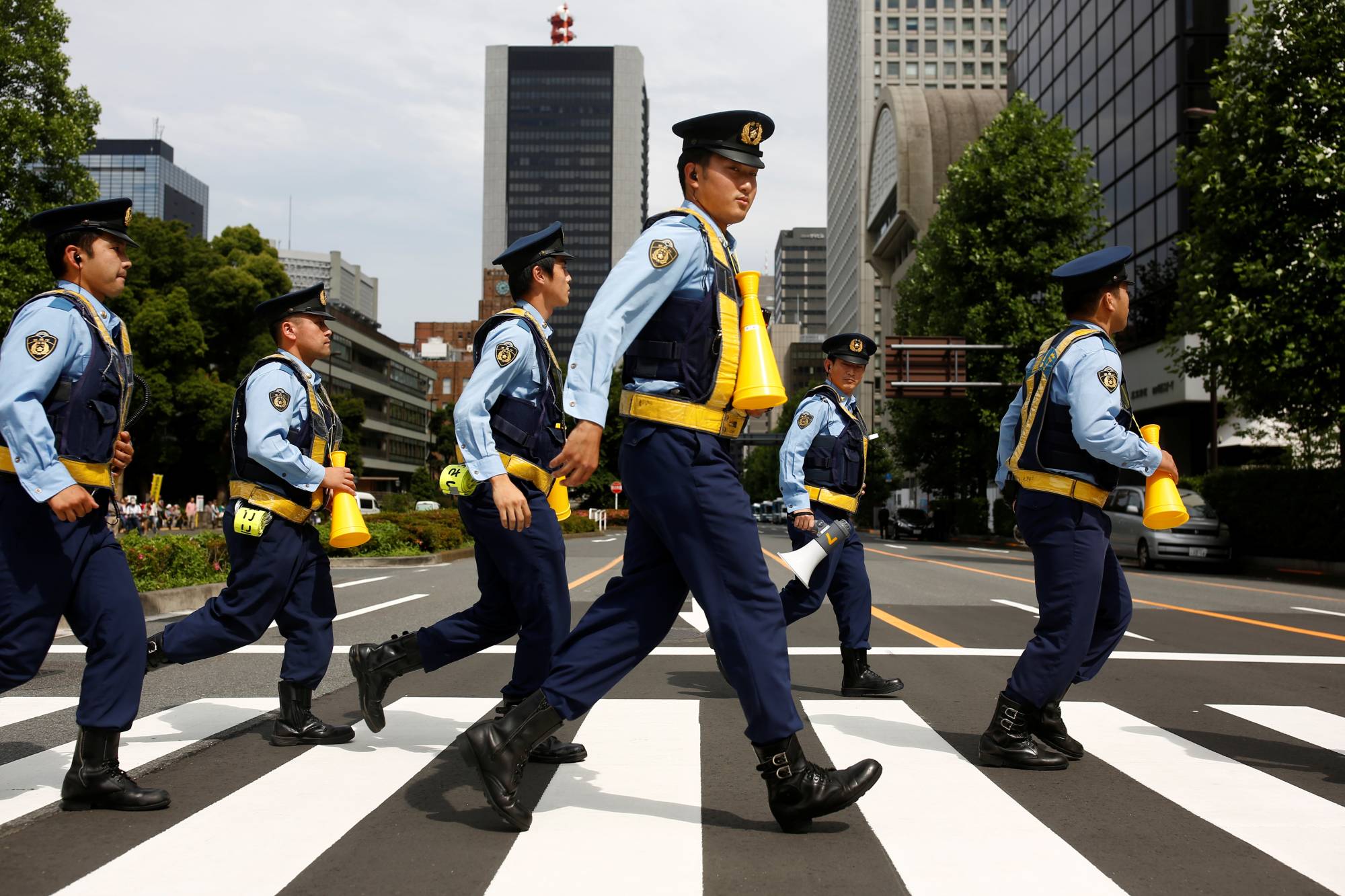Tools You Will Require While On Duty As An Officer

Police cross a street as they guard a rally against the policies of Japanese Prime Minister Shinzo Abe in Tokyo, Japan, June 5, 2016. REUTERS/Thomas Peter
Every officer will carry specific equipment while on patrol. These are usually provided by the agency where the officer works. As you go out on your first patrol, you may realize that there are other items you should bring with you. You can also get any necessary tactical gear to ensure you’re well-prepared.
Consider the tools you use frequently and whether you need to expand your arsenal. Options you may not have considered could improve the efficiency of your patrol or simply ensure you are prepared for whatever may occur during your shift.
Every Officer On Duty Must Be Equipped With The Following Tools:
Your agency will provide you with a uniform. They may also direct your choice of body armor and footwear. Make certain that you understand how to use all of the equipment that has been provided to you. Not knowing what to do in a crisis can be dangerous.
You should be comfortable with your service weapon. Most of the time, cops have a choice of weapons and ammunition. You must keep your weapon clean and ready to fire in case it is required. Extra ammunition should also be kept on hand.
Depending on your station, you may be required to wear a radio on your shoulder or job belt. Knowing your agency’s codes like the back of your hand is essential. We frequently forget things after a stressful incident. The trick is to know when and how to ask for assistance.
If your department does not supply one, keep a flashlight in your kit bag. You never know when you’re going to need it. Extras like a nightstick, knife, and/or pepper spray are viable options. Your employer will usually provide them.
Consider Adding These to Your Toolbox
It is critical to keep a backup firearm on hand. If you are unsure, check with your department about its policies on having a backup firearm. In terms of weapons, a shotgun is frequently available for use in police vehicles. It’s a good idea to supplement your arsenal with more ammo for this and your backup weapon.
It’s a good idea to keep extra water on hand. Dehydration can impair concentration and make you tired. If you want to be at the top of your game, you must always have a bottle or thermos with you.
Extra handcuffs and a change of clothing are also recommended. You never know when it will be necessary to change your clothes. If your uniform is soiled or broken, you may be required to assist someone who is stranded somewhere for an extended period of time.
You should always have your medical information on hand in case something happens that prevents you from communicating. Although it is unlikely that you will ever need it, having it on hand is always a good idea. Also, make sure you have extra pens and other necessary paperwork.
As you can see, much more equipment is required than you might think. More items like these can be added to your list. Every patrol, like every agency, is unique. Even if you never need to use these items, having them on hand is half the battle.
Firearms
Gun safety includes the proper handling, storage, and use of weapons. Regularly implementing safe gun handling procedures can help reduce the number of accidents and injuries caused by the use of firearms. Pull the trigger only when you are certain you are ready to fire the weapon. Always keep your muzzle pointed in a safe direction. Following these four principles is the simplest way to keep your firearms secure. Keep one eye on what’s going on in the distance.
When working with a pistol, make sure the muzzle is pointing in a safe direction. To accomplish this, you must never, ever point the gun at an object at which you do not intend to fire it. It’s also a good idea to stay away from anything that moves. Take no action unless you are completely prepared to. When not in use, make sure the weapon is empty to avoid unintentional emissions. As a result, both illicit and unintentional use has decreased significantly.
When not in use, a handgun should be kept in a secure location, and only the owner should have access to that location. It is critical to be aware of both your goal and your immediate surroundings. If you are unable to see what lies beyond the objective, you will be unable to shoot at anything other than the designated target.
Anyone who handles a firearm, whether they own it or not, owes it to themselves to prioritize their own safety. Follow these four gun safety principles to keep yourself and others safe from the dangers of weapons.
The Most Reliable Way To Determine If A Gun Is Loaded
Inspecting the interior of the chamber is the most reliable method for determining whether or not a firearm has ammunition. Check that the cannon is aimed in a safe direction before firing it. Once the magazine is removed, the action can begin. If you see the handgun firing, assume it’s loaded and take the necessary precautions. This will keep you safe. Even if there are no bullets left in the chamber, you should proceed with extreme caution. When handling a firearm, always assume that it is loaded.
Instructions for Disarming a Firearm
Finally, there is no such thing as a weapon that is completely risk-free. Even if you don’t own a gun, knowing how to disarm one in an emergency is essential. In the event of an accident or a violent attack, this could be a life-saving measure.
There are two methods for properly deactivating guns. Before continuing, make sure the magazine has been removed from the weapon. Until the magazine is replaced, this condition will have no effect. To begin, remove the firing pin from its socket in the gun firing pin and set it aside for the time being. The weapon cannot be used effectively until the magazine is refilled.
Seek the assistance of a skilled specialist if you are unsure how to disarm a firearm. There are several techniques for teaching gun safety that can be used.
How to Shoot a Gun Without Getting Hurt
In addition to the three safety standards that must be followed at all times when working with weapons, a few extra precautions must be taken. A weapon should be handled with extreme caution at all times. Guns were never meant for children, and anyone under the age of 18 should be prohibited from owning or using one.
To learn more about gun safety, go to https://www.catoutdoors.com












